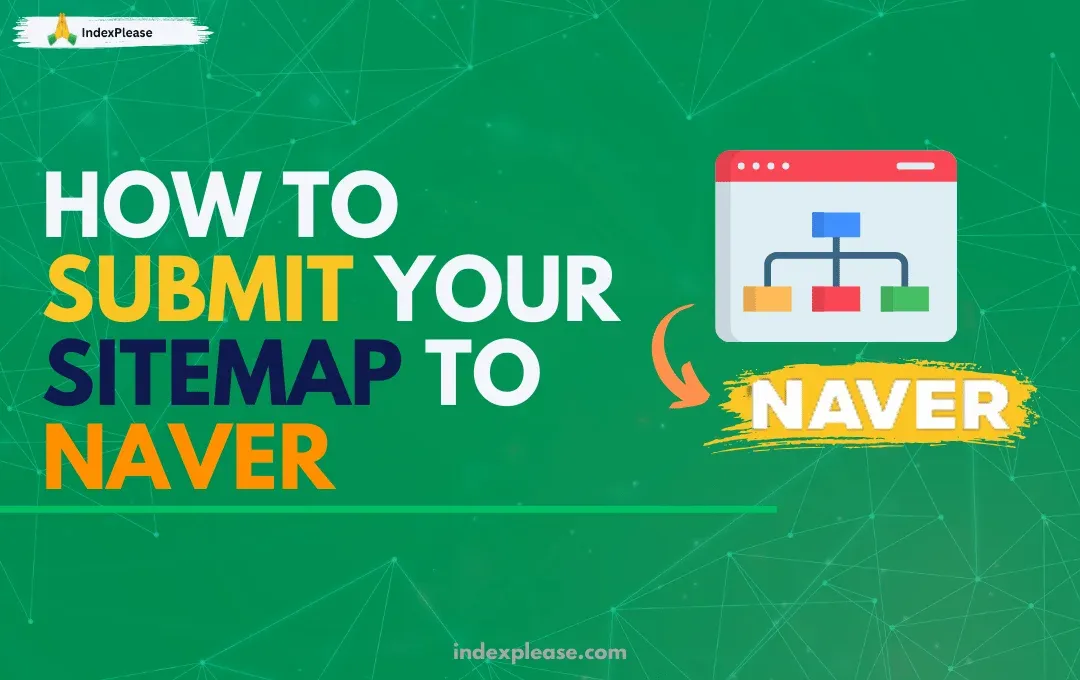
How to submit your sitemap to Naver
Naver powers over 60% of search queries in Korea and its ecosystem includes everything from blogs and cafes to news, shopping and Q&A forums. If you want your website to show up in Naver’s SeRPs, it starts with one step: setting up Naver Search Advisor (formerly Naver Webmaster Tools).
If you’re used to playing the SeO game on Google, Bing or even Yandex, Naver will surprise you.
Why Naver Indexing Matters in 2025
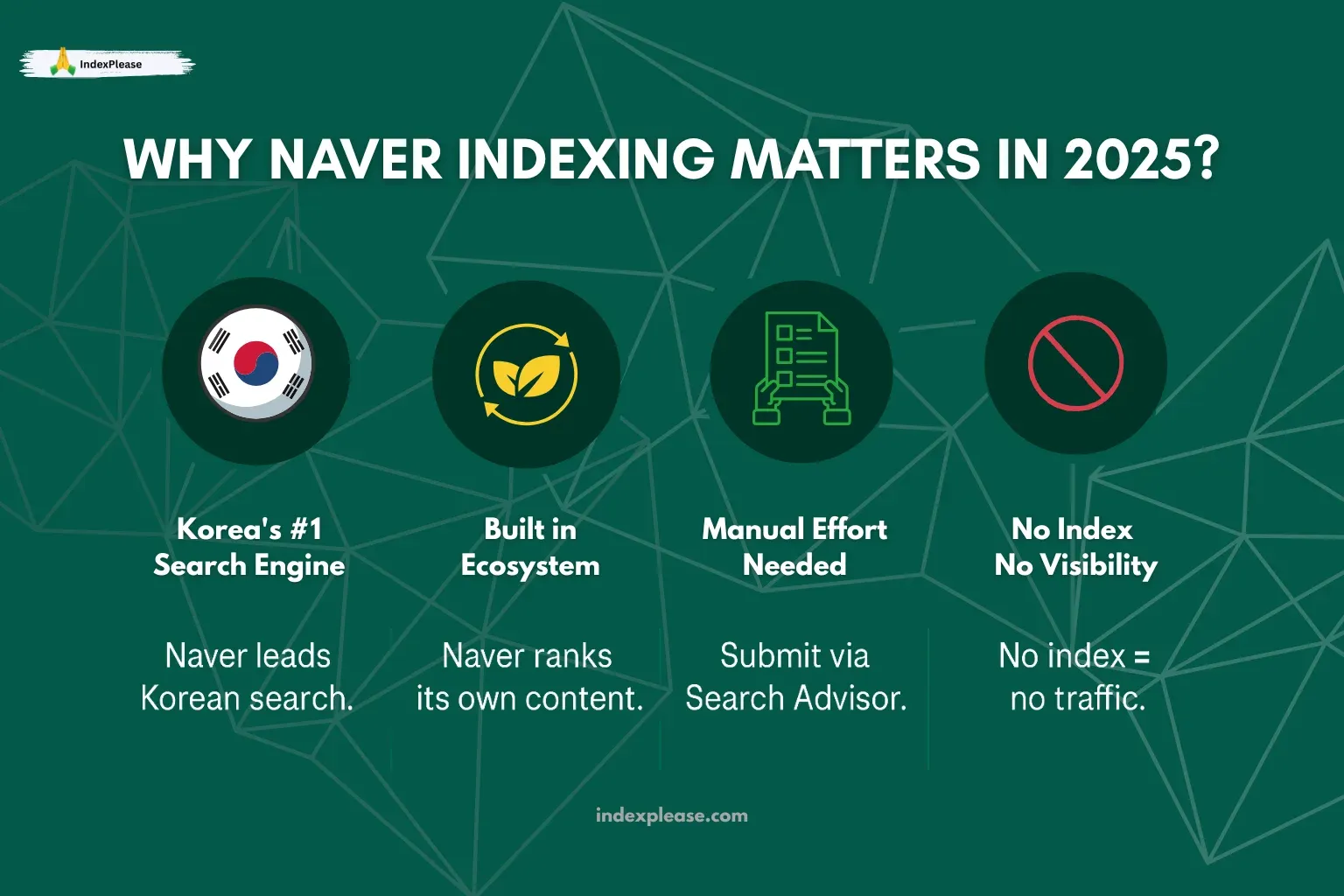
If you’re targeting South Korea, Google isn’t your main SeO battlefield, Naver is.
And it’s not just a search engine. Naver is a fully integrated content ecosystem, tightly woven into how Koreans consume the internet. From news and blogs to shopping, cafes and knowledge panels, Naver serves as the default homepage, news source and product discovery platform, especially on mobile.
Quick Facts:
- Naver controls over 60% of the Korean search market
- Its ecosystem influences what gets visibility and what doesn’t
- SeRPs are filled with Naver Blog, Naver cafe and curated modules, not just traditional web links
- Unindexed = Invisible, If Naver doesn’t crawl and store your page, no one can find you organically
Why This Is Different from Google
Google is open-web based. Naver prioritizes content that:
- Lives within its platforms (like Naver Blog or cafe)
- Has been manually submitted via Naver Search Advisor
- Includes localized, structured Korean content with clean metadata
In short: If you’re entering the Korean digital market, indexing on Naver is non-negotiable. Without it, your site may as well not exist for 50+ million internet users.
What Is a Sitemap and Why Bing Needs It
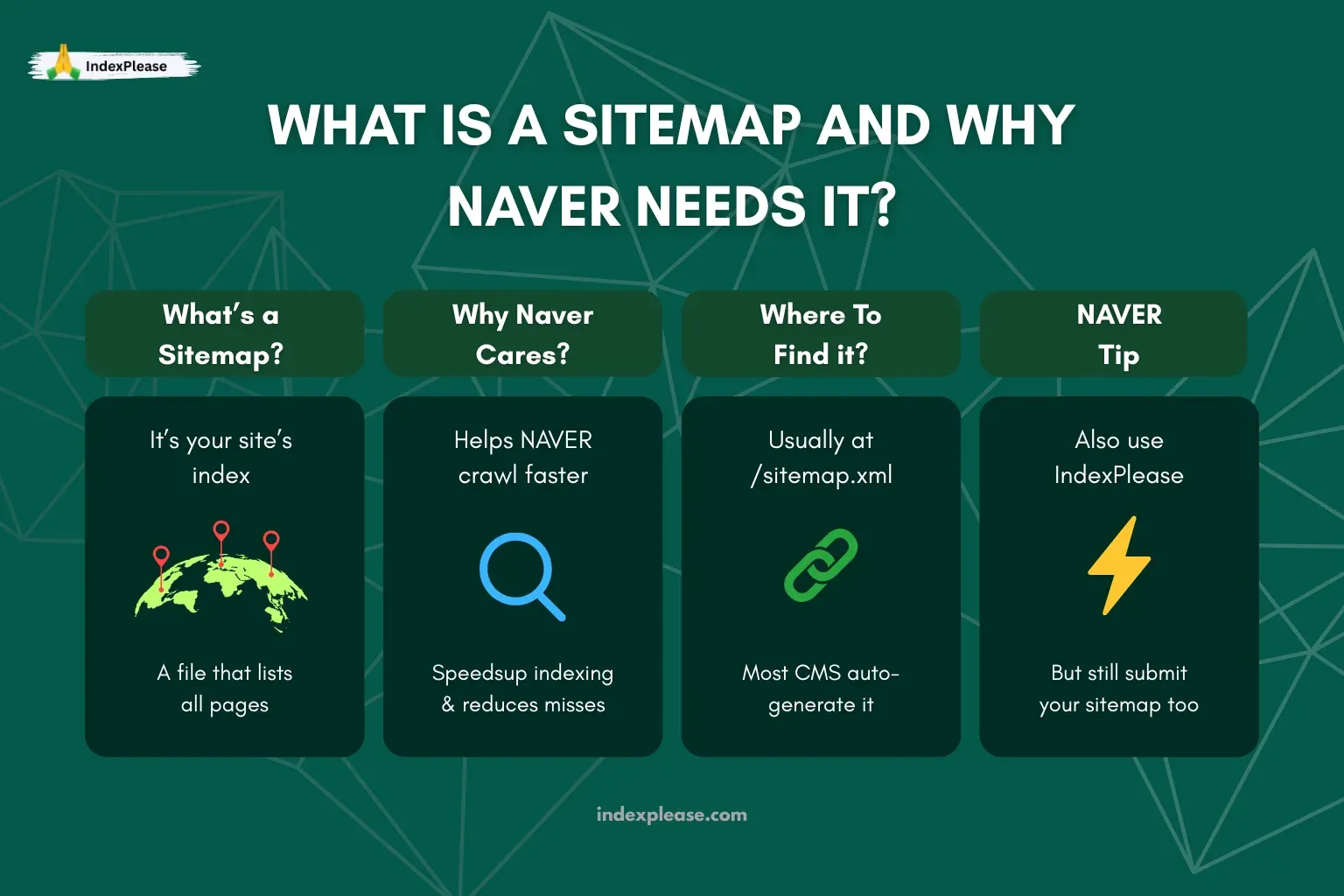
If search engines are like librarians, your sitemap is the index card that tells them what’s on the shelf. It’s a structured file, usually in XML format, that lists all the important pages on your website. Think of it as a roadmap for your site, built specifically for search bots.
What Does a Sitemap Look Like?
It’s usually a file located at: https://yourdomain.com/sitemap.xml
Modern SeO platforms like WordPress (with Rank Math or Yoast), Ghost and Shopify all auto-generate this file for you.
If you’re using WordPress, your sitemap is likely at: https://yourdomain.com/sitemap_index.xml
Why Does Naver Need a Sitemap?
Naver’s search engine operates differently than Google. It relies heavily on its own ecosystem (like Naver Blog, Naver Cafe and Knowledge iN), but it still crawls and indexes external websites. If you run a WordPress blog, Ghost site or Shopify store targeting Korean users, submitting your sitemap to Naver can significantly boost visibility.
By submitting a sitemap, you help Naver:
- Discover new or updated content faster
- Prioritize important URLs for indexing
- Avoid missing pages with weak internal links
- Better understand your site’s structure and frequency of updates
even though Naver’s crawler isn’t as fast or aggressive as Googlebot, it still respects your sitemap, especially if you’ve verified your site and keep your structure clean.
Step-by-Step: Submitting Your Sitemap to Naver Webmaster Tools
How to Set Up Naver Webmaster Tools (Search Advisor)
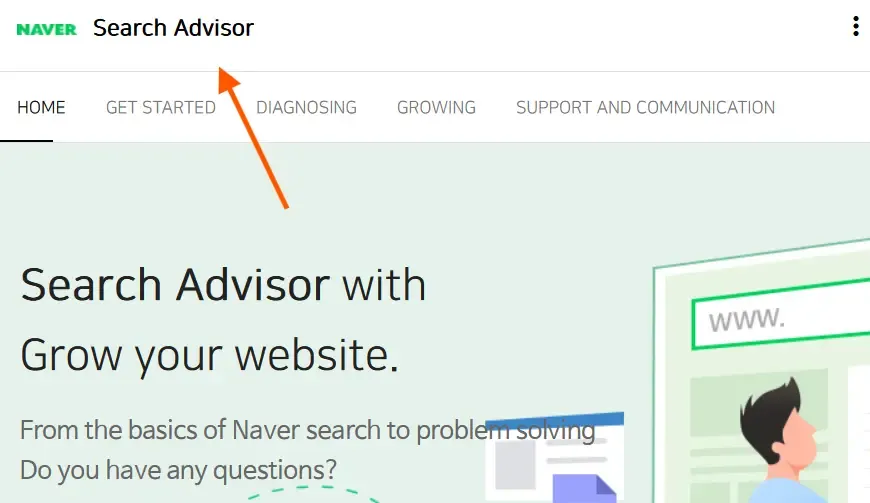
Setting up Naver Search Advisor isn’t difficult, but it’s a bit different from Google or Bing. Here’s exactly how to do it in 2025:
1. Visit the Search Advisor Portal
Go to https://searchadvisor.naver.com
2. Log In with a Naver Account
- If you don’t have one, you’ll need to create a Naver ID
- Some features (like phone verification) may require a Korean mobile number
3. Add Your Website
- Click “+ Add Site”
- enter your full domain (e.g.,
https://yourdomain.kr) - Fill in basic details:
- Site name
- Site type (blog, news, shopping, etc.)
- Primary language (Korean preferred)
- Category (e.g., health, travel, education)
4. Verify Site Ownership
Choose from one of these methods:
- Meta tag, insert into your site’s
<head> - HTML file upload, place a verification file in your site’s root folder
- DNS TXT record, edit DNS settings at your hosting provider
Once added, click “Verify” to complete the process.
5. Get Dashboard Access
After verification:
- Naver will start crawling your site
- You can access tools for sitemaps, collected pages and diagnostics
- It may take a few days for initial crawl data to appear
Once this is done, you’re officially “connected” to Korea’s top search engine.
How to Submit Your Sitemap to Naver

Submitting your sitemap is one of the most important steps after setting up Naver Search Advisor. Without it, NaverBot (Yeti) may never discover deeper content, especially if your homepage doesn’t link to everything.
What You’ll Need
- A valid XML sitemap, typically found at:
https://yourdomain.com/sitemap.xml - It must be UTF-8 encoded and list indexable pages only
Paste and Submit Your Sitemap URL
Copy your sitemap URL (usually something like https://yourdomain.com/sitemap.xml) and paste it into the box.
Click the green (Submit) button.
You should see a confirmation message once it’s accepted. If there’s an error, double-check that your sitemap loads properly in a browser and is in valid XML format.
Monitor Sitemap Status
After submitting, return to the Sitemap section to track:
- How many URLs were found
- How many are currently indexed
- Any errors or warnings (in Korean)
If you use Chrome, you can right-click and translate the page to english for easier navigation.
What Happens Next?
- NaverBot will periodically crawl your sitemap
- You’ll see how many URLs were fetched vs. indexed
- errors (if any) will appear in the diagnostics tab
Best Practices:
- Include only canonical, crawlable URLs
- Update your sitemap when you publish/delete content
- Re-submit the sitemap after large content updates
Reference your sitemap in robots.txt:
Sitemap: https://yourdomain.com/sitemap.xml
Submitting your sitemap is your fastest route into Naver’s ecosystem, don’t skip it.
Common Issues and How to Fix Them (When Submitting to Naver)
Submitting your sitemap to Naver is usually straightforward, but sometimes, things don’t go as planned. If you see errors inside Naver Search Advisor or if your pages still aren’t appearing in search results, here are the most common issues and how to fix them.
1. Sitemap URL Rejected
What it means: Naver can’t access the sitemap you submitted.
Fix it:
- Make sure your sitemap is public (not behind a login wall or blocked by IP filters)
- Confirm the URL begins with
https:// - Open it in a browser and check that it loads correctly (you should see XML code)
- Check your server response, Naver will reject URLs that return a 403 or 404
2. Pages Blocked by robots.txt
What it means: Your robots.txt file is preventing Naver’s crawler (Yeti) from accessing key pages.
Fix it:
- Visit
yourdomain.com/robots.txt - Look for any lines that say:
User-agent: *orUser-agent: Yetifollowed byDisallow: /or specific paths - If you’re accidentally blocking content, remove or edit those lines
- Re-upload your updated robots.txt file and re-submit the sitemap
3. Meta Noindex Tags
What it means: Your pages are being told not to appear in search results, either intentionally or by mistake.
Fix it:
- Check the
<head>of your pages for this tag:<meta name="robots" content="noindex"> - Replace it with:
<meta name="robots" content="index, follow">(or remove the tag entirely) - Re-submit your sitemap or individual URLs in Naver Search Advisor
4. No Internal Links to Sitemap Pages
What it means: even if your sitemap is submitted, Naver may not prioritize crawling if those pages aren’t linked anywhere.
Fix it:
- Add clear internal links from your homepage, menu or blog index
- Make sure important content is linked from more than one place
- Update old content to include links to new pages
This boosts crawlability and helps both users and search engines navigate your site better.
5. Sitemap Too Large or Complex
What it means: If your sitemap includes thousands of pages or deep nested sections, Naver may struggle to process it fully.
Fix it:
- Break your sitemap into smaller chunks (e.g.,
sitemap-posts.xml,sitemap-products.xml) - Use a sitemap index file (
sitemap_index.xml) that links to sub-sitemaps - Most SeO plugins like Rank Math or Yoast handle this automatically
How IndexPlease Complements Naver Search Advisor
Naver Search Advisor is a great manual platform, but what happens when you’re managing multiple domains, publishing content daily or dealing with hundreds of URLs that need indexing?
That’s where IndexPlease fills the gap.
What Naver Webmaster Tools Can’t Do:
- No auto-submission for new pages
- No retry system for unindexed URLs
- No bulk monitoring across multiple sites
- No alerts if pages drop out of the index
- No unified view of Google + Bing + Yandex
What IndexPlease Adds to the Stack:
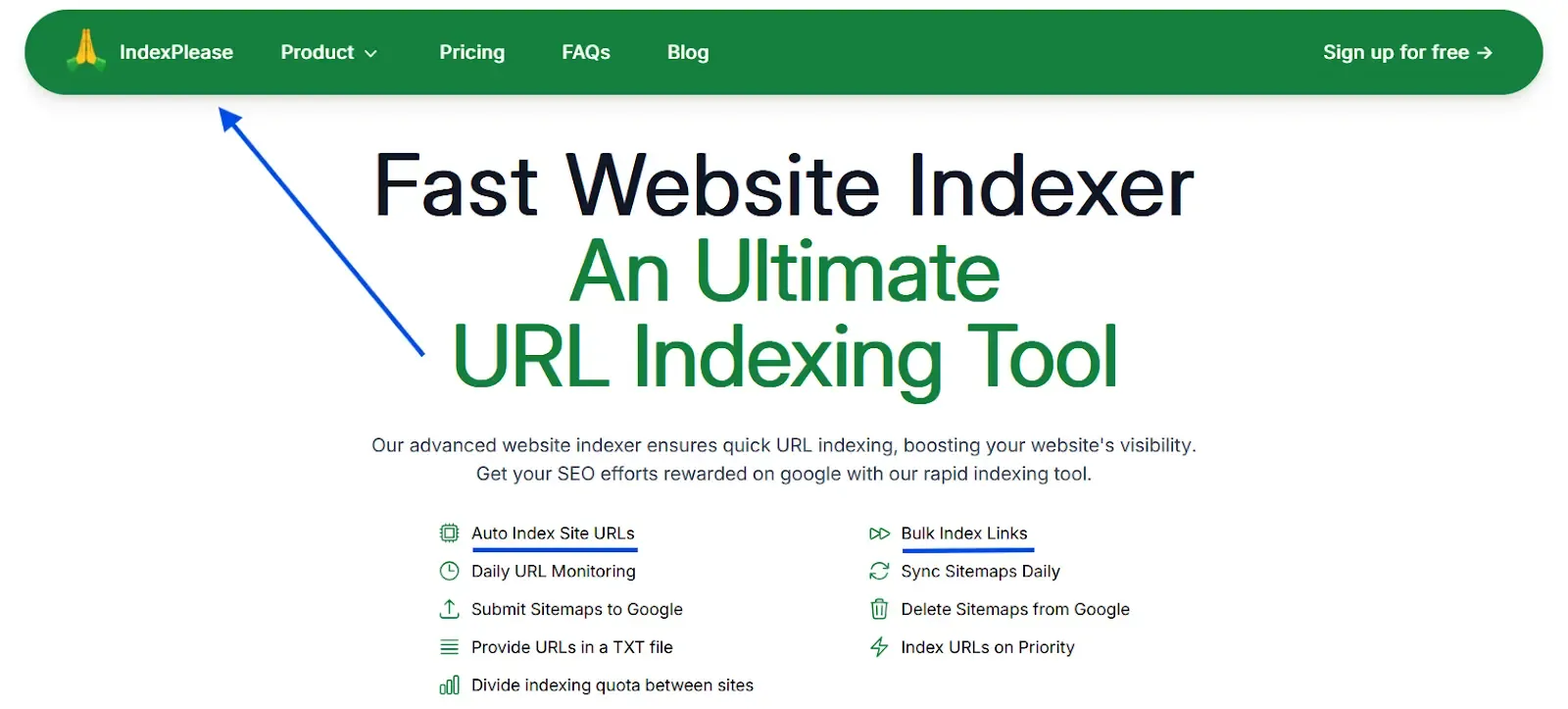
Automated URL Submission to Bing
Skip the manual copy-paste. IndexPlease submits new and updated URLs directly to Naver’s endpoint, in bulk.
Live Indexing Status Tracking
See which URLs are:
- Indexed
- Pending
- Skipped
- Failed (with retry logs)
Multi-engine Support
Track and submit URLs to Google, Bing and Yandex, all in one dashboard.
Retry Automation
If a URL doesn’t get indexed, IndexPlease keeps trying intelligently until it lands in the index, no manual resubmission needed.
Multi-Site Control
Manage multiple domains, clients or multilingual sites in one clean interface. In short, Bing Webmaster Tools is where indexing begins. IndexPlease is how you scale it.
Final Thoughts:
If you’re serious about reaching South Korean audiences in 2025, getting indexed on Naver is non-negotiable. It’s not just another search engine, it’s an entire ecosystem where visibility depends on playing by its unique rules.
Submitting your sitemap might feel like a small technical task, but it’s one of the most powerful ways to open the door to Naver’s discovery process. Without it, even the best content risks getting lost in the shadows.
Here’s what to remember:
- Set up Naver Search Advisor early and verify your domain properly
- Submit your sitemap (in proper XML format) to help Yeti find your pages
- Monitor indexing status inside your dashboard and fix errors quickly
- Use IndexNow to automate updates and ping Naver the moment content changes
- Let indexplease handle the heavy lifting if you want to skip repetitive submissions
IndexPlease adds the automation layer that Naver Search Advisor lacks:
- Auto Index Site URLs
- Daily URL Monitoring
- Submit Sitemaps to Google
- Provide URLs in a TXT file
- Divide indexing quota between sites
- Bulk Index Links
- Sync Sitemaps Daily
- Delete Sitemaps from Google
- Index URLs on Priority
In the crowded Korean web, visibility is everything. With just a few smart moves and a clear sitemap, you make it easier for Naver to recognize, crawl and rank your content.
FAQs
1. Is it mandatory to submit a sitemap to Naver?
Technically, no Naver can still find your site over time. But submitting your sitemap speeds up discovery and ensures more of your pages get indexed. Without a sitemap, NaverBot may miss important pages entirely.
2. What format should my sitemap be in for Naver?
Naver only accepts XML sitemaps. It must be properly structured, UTF-8 encoded and publicly accessible. WordPress, Ghost and Shopify usually auto-generate this file for you.
3. Where can I find my sitemap URL?
Common default locations:
- WordPress:
https://yourdomain.com/sitemap_index.xml - Ghost:
https://yourdomain.com/sitemap.xml - Shopify:
https://yourdomain.com/sitemap.xml
Always open it in a browser to verify it works before submitting.
4. Can I submit multiple sitemaps?
Yes. If your site is large or split into different sections (e.g., blog, product, category pages), you can create multiple sitemap files and link them in a sitemap index file like: https://yourdomain.com/sitemap_index.xml
5. Why is Naver showing zero indexed pages?
This usually means:
- You haven’t submitted a sitemap
- Your pages are blocked by
robots.txt - The site is not verified properly
- NaverBot hasn’t crawled your site yet (can take a few days)
Use the diagnostics tab in Naver Search Advisor to identify the exact issue.
6. Does Naver support IndexNow?
Yes! Naver supports the IndexNow protocol, which allows you to instantly notify the search engine of content changes. Tools like indexplease can automate this and keep your sitemap updates synced in real-time.
7. Can I track indexing status after submission?
Absolutely. Naver Search Advisor shows how many URLs were:
- Submitted via sitemap
- Discovered
- Successfully indexed
- Facing crawl issues
You’ll find this under the Sitemap and Diagnostics tabs.